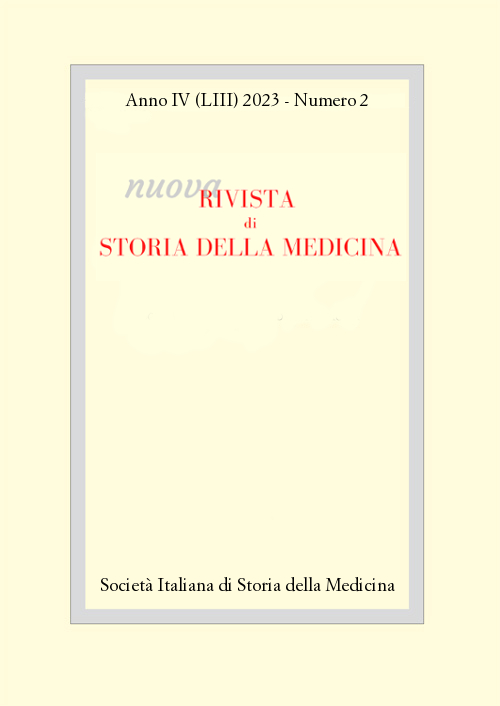The circumnavigation of the Magenta Pyrocorvette.
Health, diplomatic, commercial and scientific aspects.
DOI:
https://doi.org/10.13135/2724-4954/8452Keywords:
trip around the world, epidemics on board, dysentery, Pyrocorvette Magenta, typhoid fever, smallpox, Filippo De Filippi, Camillo Cucca, Vittorio Arminjon, Pietro AntonacciAbstract
On 2 February 1866 the propeller-powered pyrocorvette Magenta set sail from Montevideo on a round-the-world mission. The purpose of the trip is to establish regular diplomatic relations with the Middle Empire and Japan, to enable profitable trade with those nations (especially the import of silkworm seed) and to carry out scientific research. Results all happily achieved. But Frigate Doctor Camillo Cucca and Corvette Doctor Gennaro D’Orsi on the voyage that lasted more than two years had to deal with several challenging diseases such as dysentery, typhoid fever and smallpox with the facilities and medicines available on board at that time. The best-known clinical case, because of the resonance of the name, was that of the kingdom’s senator, physician and naturalist Filippo De Filippi, embarked as head of the scientific mission who died in Hong Kong as a result of a liver abscess of a likely amoebic nature. If we compare the reported clinical case history, including the modest number of deaths that occurred, with that of other round-the-world missions made in the 19th century, it can be said that the hygienic and preventive measures and therapies adopted by the ship’s doctors to protect the health of the crew were very effective.



